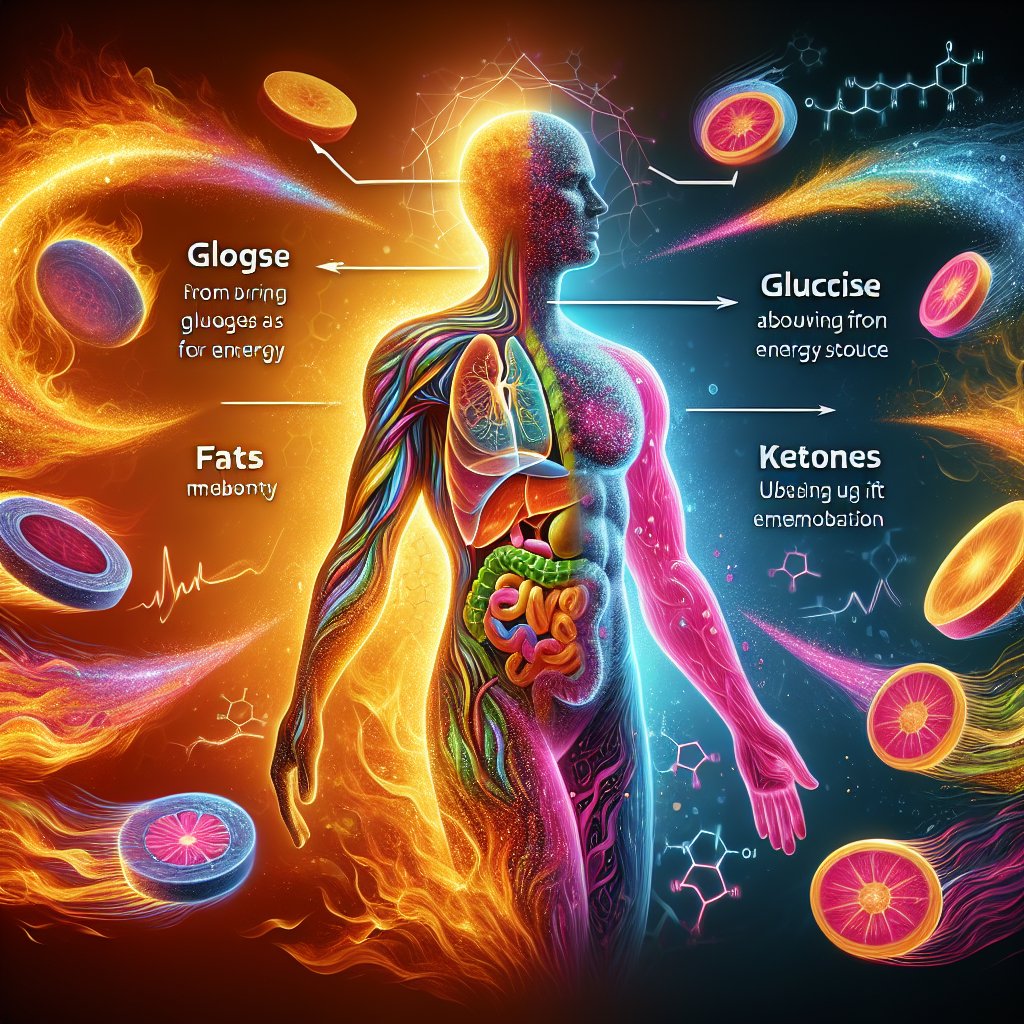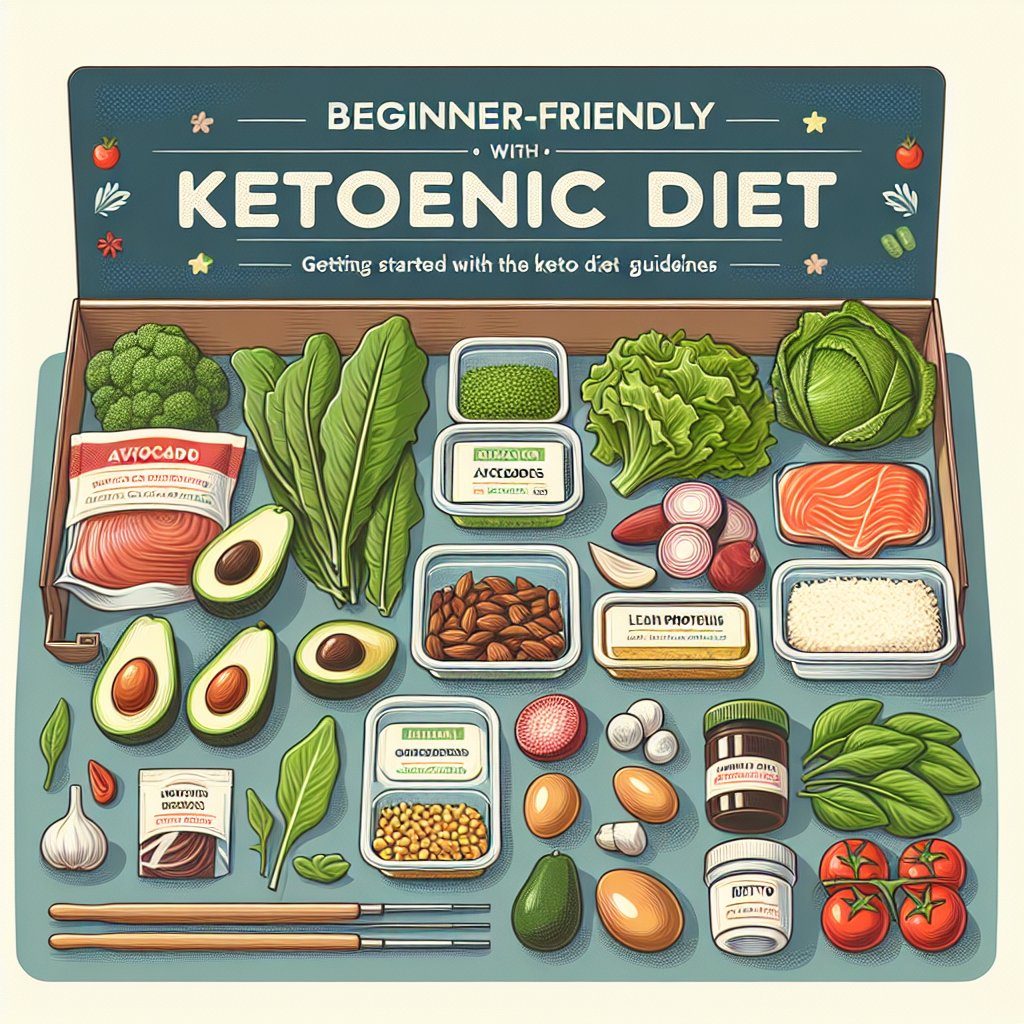Unlocking the Secrets of the Keto Diet Plan: How It Works and Why It’s Taking the World by Storm!
Unlocking the Secrets of the Keto Diet Plan: How It Works and Why It’s Taking the World by Storm!
Hey there, keto enthusiasts! Today, we’re diving into the incredible world of the ketogenic diet. Let’s kick things off with a brief overview of the keto diet and its skyrocketing popularity in recent years. You see, the keto diet isn’t just another fad – it’s a lifestyle shift that has captured the attention of health-conscious individuals worldwide. This high-fat, low-carb eating plan has gained momentum due to its promising effects on weight management, improved energy levels, and mental clarity. So, what exactly is the keto diet, and how does it work? Let’s unravel the mystery together!

What is the Keto Diet?
Let’s dive into the concept of the keto diet. The fundamental principle of this diet is to consume high amounts of healthy fats, significantly reduce the intake of carbohydrates, and moderate your protein consumption. By doing so, your body enters a state of ketosis, where it becomes incredibly efficient at burning fat for energy.
This low-carbohydrate, high-fat diet prompts the body to produce ketones in the liver, shifting the body’s energy source from glucose to fat. This has numerous health benefits, including weight loss, blood sugar control, and improved mental focus.
Benefits of the Keto Diet
Let’s talk about the potential benefits of the keto diet plan. Research has shown that following a ketogenic diet can lead to significant weight loss. When you limit your carb intake and increase your consumption of healthy fats, your body enters a state of ketosis, where it burns fat for fuel instead of carbohydrates. This can result in rapid weight loss, making the keto diet an appealing option for those looking to shed extra pounds.
Moreover, the keto diet has been found to improve blood sugar control. By reducing carb intake, the diet can lower blood sugar levels and increase insulin sensitivity, making it a potential therapeutic approach for people with type 2 diabetes.
Additionally, many individuals report experiencing enhanced mental clarity and improved cognitive function when following a ketogenic eating plan. This could be attributed to the stable energy levels achieved through ketosis and the brain’s efficient utilization of ketones as an alternative fuel source.
How Does the Keto Diet Work
When you embark on the keto diet, a remarkable physiological process called ketosis takes place within your body. Normally, the primary fuel source for your body is glucose, which comes from carbohydrates. However, when you significantly reduce your carb intake, your body shifts gears and starts burning fat for energy instead.
This shift occurs because when carbohydrate intake is limited, the body’s glycogen stores become depleted, and as a result, the liver begins to produce ketone bodies from fats. These ketones then serve as an alternative fuel source for the body and brain, bringing about the state of ketosis.

Foods to Eat on the Keto Diet
When it comes to the keto diet, the focus is on healthy fats, low-carb vegetables, and high-quality proteins. Here’s a list of foods that are typically consumed on the keto diet:
Healthy Fats:
Avocado, olive oil, coconut oil, grass-fed butter, and nuts and seeds.
Low-Carb Vegetables:
Spinach, broccoli, cauliflower, zucchini, and asparagus.
High-Quality Proteins:
Salmon, tuna, chicken, turkey, and lean cuts of beef and pork.
Foods to Avoid on the Keto Diet
When following the keto diet plan, it’s important to steer clear of certain foods that can halt the body’s state of ketosis. This means saying no to sugary snacks like candies, cakes, and cookies, as well as starchy grains such as rice, wheat, and corn. Additionally, high-carb fruits like bananas, oranges, and apples should also be restricted. These foods can spike blood sugar levels and disrupt the fat-burning metabolic process that the keto diet aims to achieve.
Getting Started with the Keto Diet
So, you’re ready to start your keto journey? Congratulations! Transitioning to a keto-friendly lifestyle can feel daunting at first, but with the right approach, it’s totally doable. Here are some practical tips for beginners:
Educate Yourself:
First things first – educate yourself about the keto diet. Understand the science behind it, familiarize yourself with keto-friendly foods, and learn about the potential benefits. Knowledge is power!
Plan Your Meals:
Meal planning is crucial. Stock up on healthy fats, quality proteins, and low-carb vegetables. Having a meal plan can help you stay on track and resist temptations.
Navigate Challenges:
Acknowledge that there may be challenges along the way. Keto flu, cravings, and social situations can be tricky. But remember, many have successfully navigated through these challenges, and so can you!
By embracing these tips, you’ll be well-prepared to kick-start your keto journey and overcome any potential hurdles that come your way.

Potential Side Effects of the Keto Diet
When starting the keto diet, some individuals may experience common side effects as their bodies adapt to using fat for fuel instead of carbohydrates. These may include the keto flu, which can cause fatigue, headache, dizziness, and nausea. Additionally, some people may experience constipation due to the reduced intake of high-fiber foods.
To manage these side effects, it’s crucial to stay well-hydrated, increase electrolyte intake, and gradually increase fiber consumption through low-carb, high-fiber foods like avocados and flaxseeds. Adequate rest and regular light exercise can also help alleviate fatigue and dizziness.
Remember, these side effects are often temporary and will generally subside as your body adjusts to the keto diet.
Keto Diet Success Stories
Let’s kick off with some incredibly inspiring success stories of individuals who have achieved their health and weight goals through the keto diet. There’s Emma, who shed 50 pounds and improved her energy levels, and Mark, who managed to reverse his type 2 diabetes. These real-life transformations are living proof that the keto diet plan can work wonders for those who commit to it.
Conclusion
By following the keto diet plan, individuals can benefit from improved weight loss, increased energy levels, better mental focus, and a reduced risk of certain health conditions. This high-fat, low-carb, and moderate-protein diet works by forcing the body into a state of ketosis, where it burns fat for fuel instead of carbohydrates. The body becomes remarkably efficient at burning fat for energy, leading to weight loss. When followed correctly, the keto diet can be highly effective in achieving these desired outcomes.


